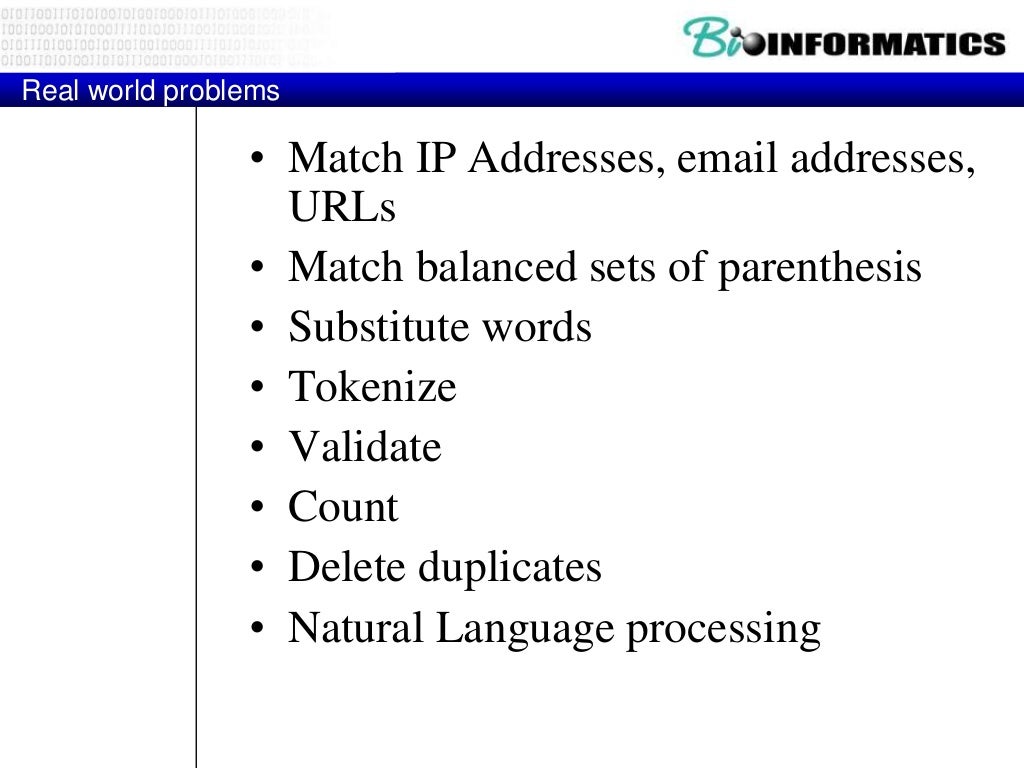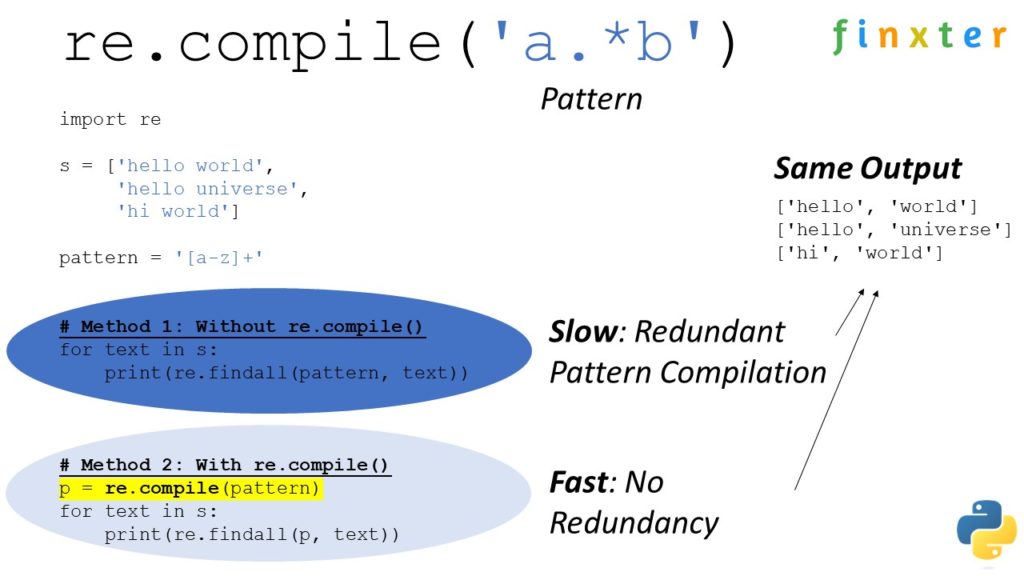

\w It is used to get word characters in a string. \S It is used to get others than white spaces in a string. \s It is used to get the white spaces in a string. \D It is used to get others than digits in a string. \d It is used to check if string has any digits. \B It is used to check if are there any specific character reside but not at the beginning or at the end of the string. \b It is used to check if are there any specific character reside at the beginning or at the end of the string. \A It is used to check if are there any specific characters reside at the beginning of a string. Below, you can find the specific sequences and examples for them. After this sign, a specific lower or upper case letters is used. Special sequences are used with the help of “ /” character.
#Regex python code
In the below, example, we will check “ l” and “ y” characters in the message and the code will return with the characters that watch any of these characters. This can be also done with the numbers like. Returns with the characters that match any of these characters (x,y,z).

Below, you can find some of them and their meaning: So, wghat re these set statements used with RegEx. The meaning of these square brackets are different according to the used characters in these square brackets. Sets used with Python RegEx are the specific statements in square brackets ( ).
#Regex python install
To install the regex module, you can use pip, the Python package manager.Beside functions, there are metacharacters used with Python RegEx that has specific meanings. The regex module in Python is an alternative regular expression engine that supports several advanced features, such as recursive patterns, atomic groups, and lookbehind assertions with variable-length patterns. Matches if the string ends with the given regex Matches any alphanumeric character, this is equivalent to the class. Matches any non-digit character, this is equivalent to the set class Matches any decimal digit, this is equivalent to the set class the string should not start or end with the given regex \b(string) willĬheck for the beginning of the word and (string)\b will check for the ending of the word. Matches if the word begins or ends with the given character. Matches if the string begins with the given characters It makes it easier to write commonly used patterns. Special sequences do not match for the actual character in the string instead it tells the specific location in the search string where the match must occur. Metacharacters Special Sequences in Regex matches a literal dot, rather than any character. Groups a sequence of characters together for use with metacharacters like *, +, and ?.Įscapes the next character, so that it is treated literally rather than as a metacharacter. Matches any one character that is not inside the brackets. Matches any one of the characters inside the brackets. Matches between n and m occurrences of the preceding character. Matches at least n occurrences of the preceding character. Matches exactly n occurrences of the preceding character. Matches zero or one occurrence of the preceding character.

Matches one or more occurrences of the preceding character. Matches zero or more occurrences of the preceding character. Matches any single character except a newline. Some of the common metacharacters used in regular expressions are: Metacharacter
#Regex python how to
Before starting with the Python regex module let’s see how to actually write regex using metacharacters or special sequences. The syntax of regular expressions varies depending on the implementation and the specific task at hand, but it generally involves using a combination of characters and metacharacters that have special meanings when used in a certain way. This pattern can be used to match a specific string, a set of strings that share a common format or structure, or even to identify and extract certain pieces of data from a larger dataset. In essence, a regular expression is a sequence of characters that define a search pattern. Regular expressions, often abbreviated as “regex,” are a powerful tool used in computer programming, text processing, and data validation to match, search, and manipulate text patterns. In this article, we will explore how to use the re library to match exact strings in Python, with good implementation examples. Python’s regex library, re, makes it easy to match exact strings and perform other types of text processing tasks.

Regular expressions, also known as regex, are an incredibly powerful tool for searching and manipulating text.


 0 kommentar(er)
0 kommentar(er)
